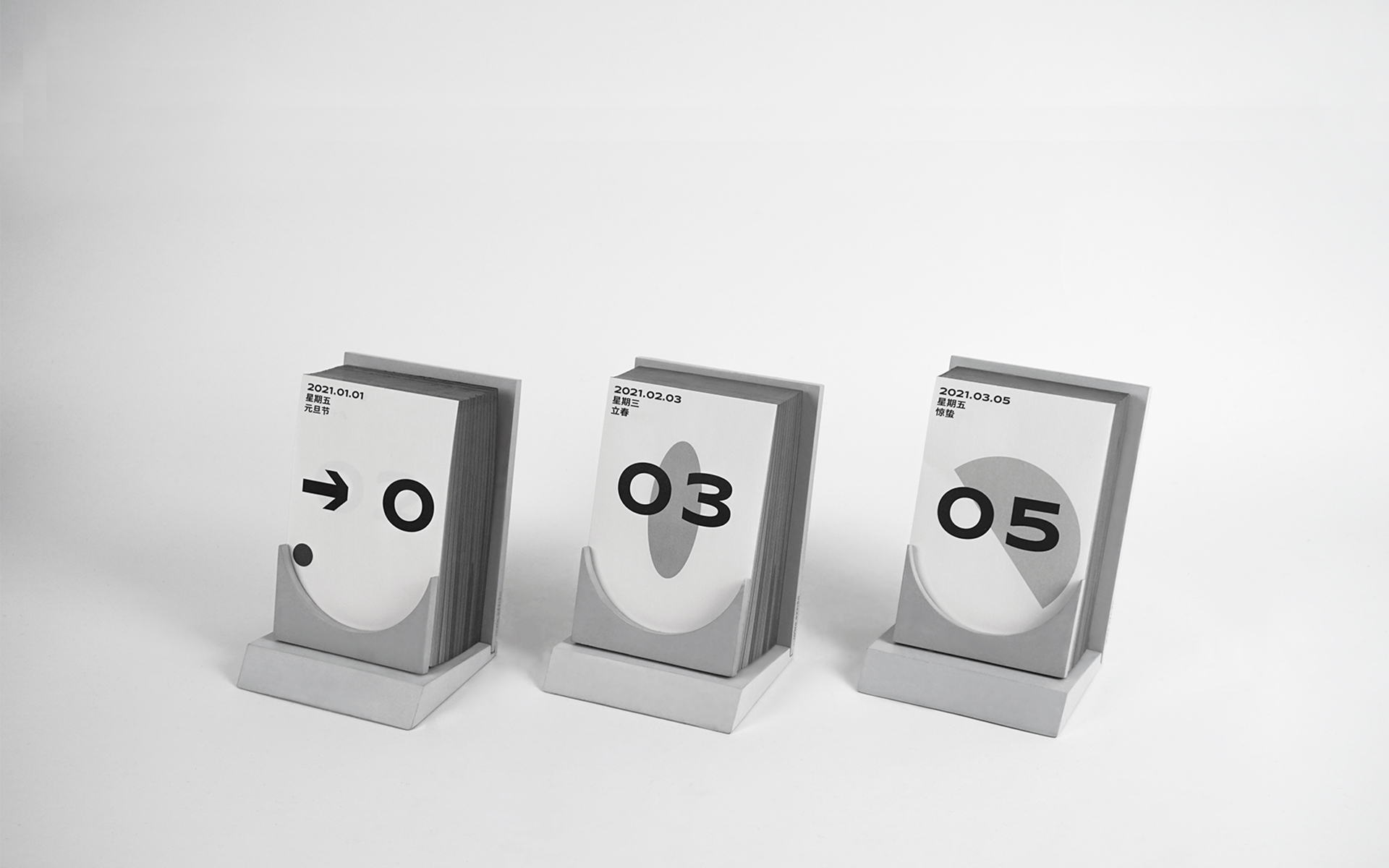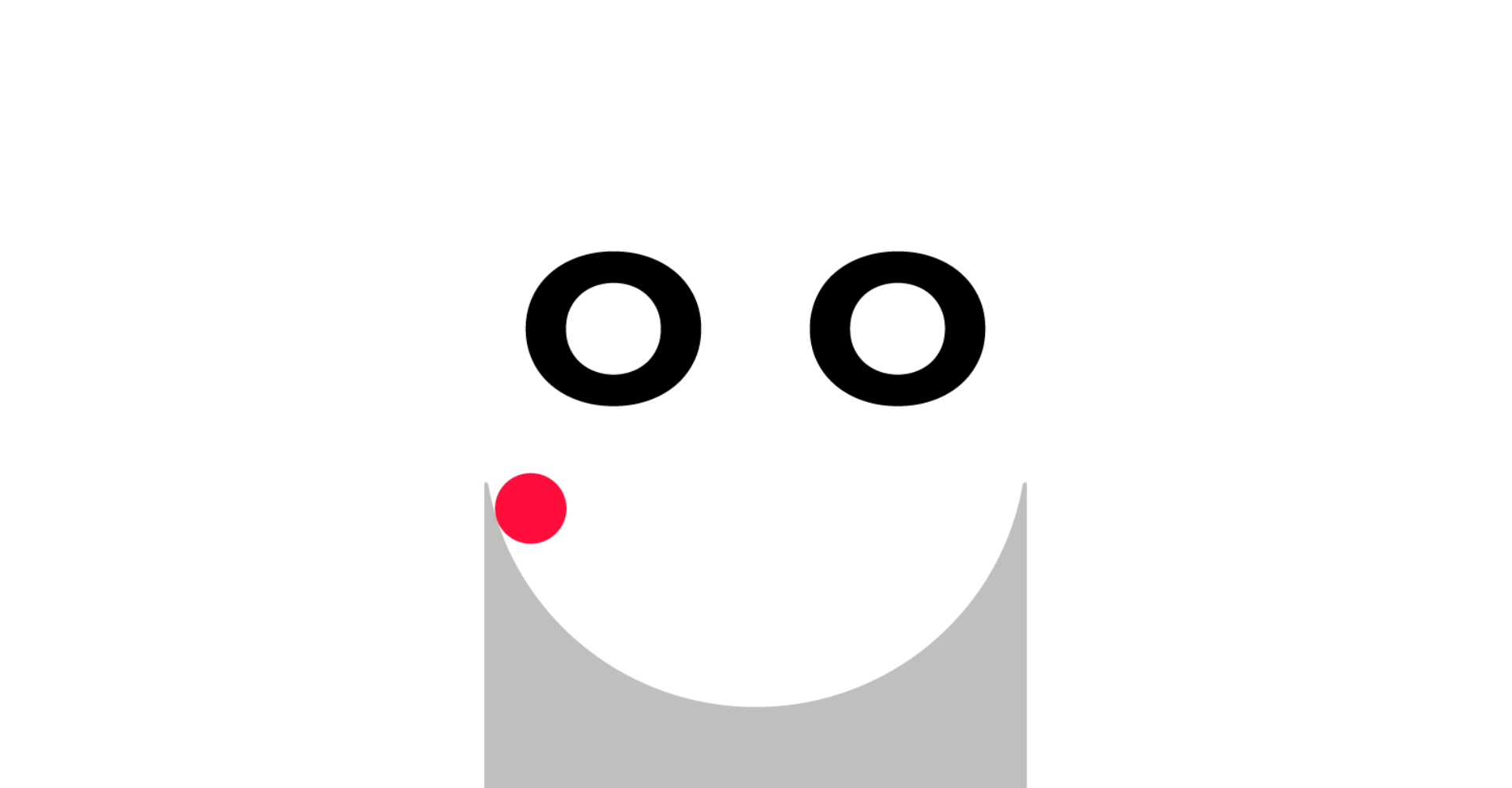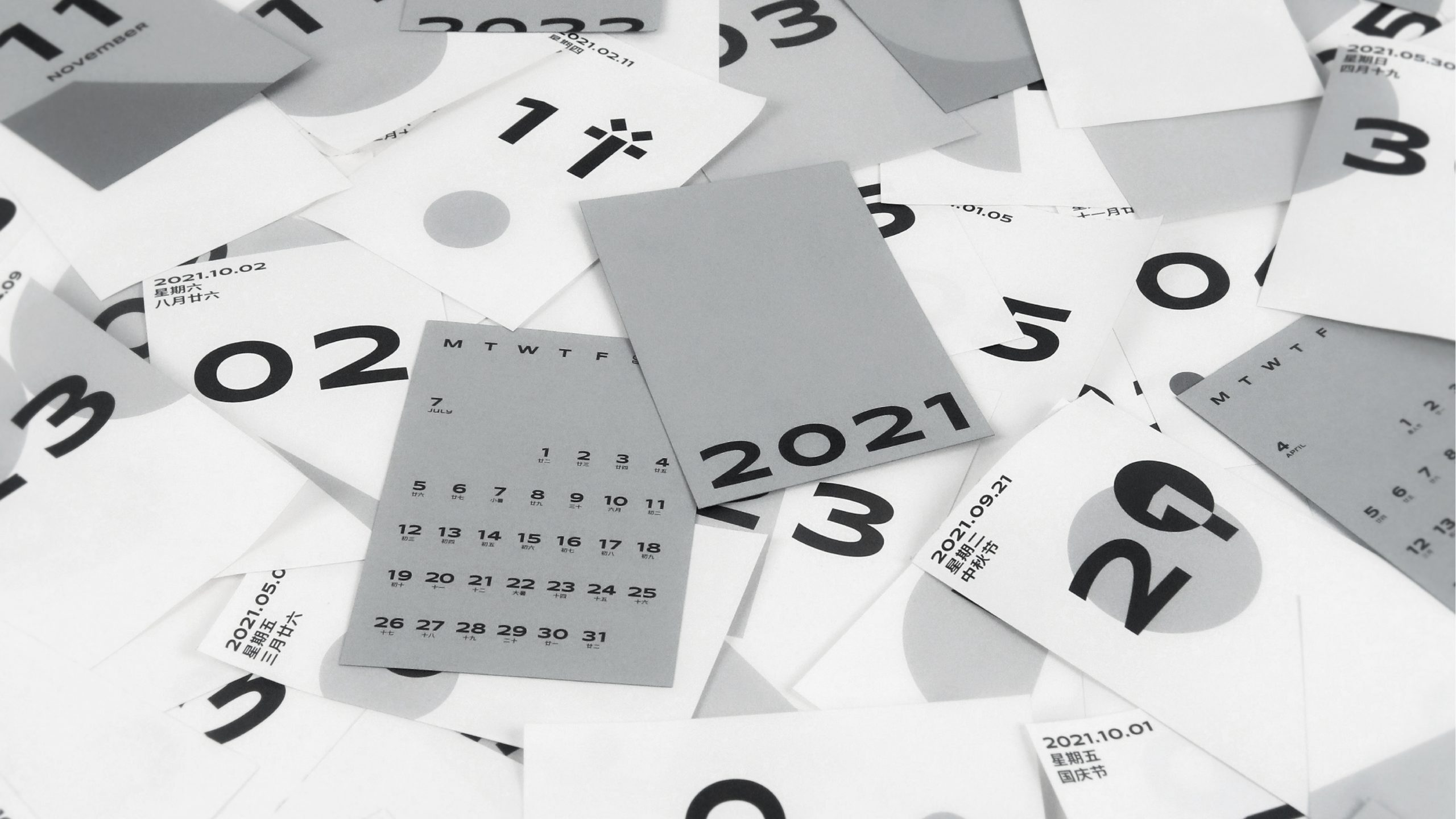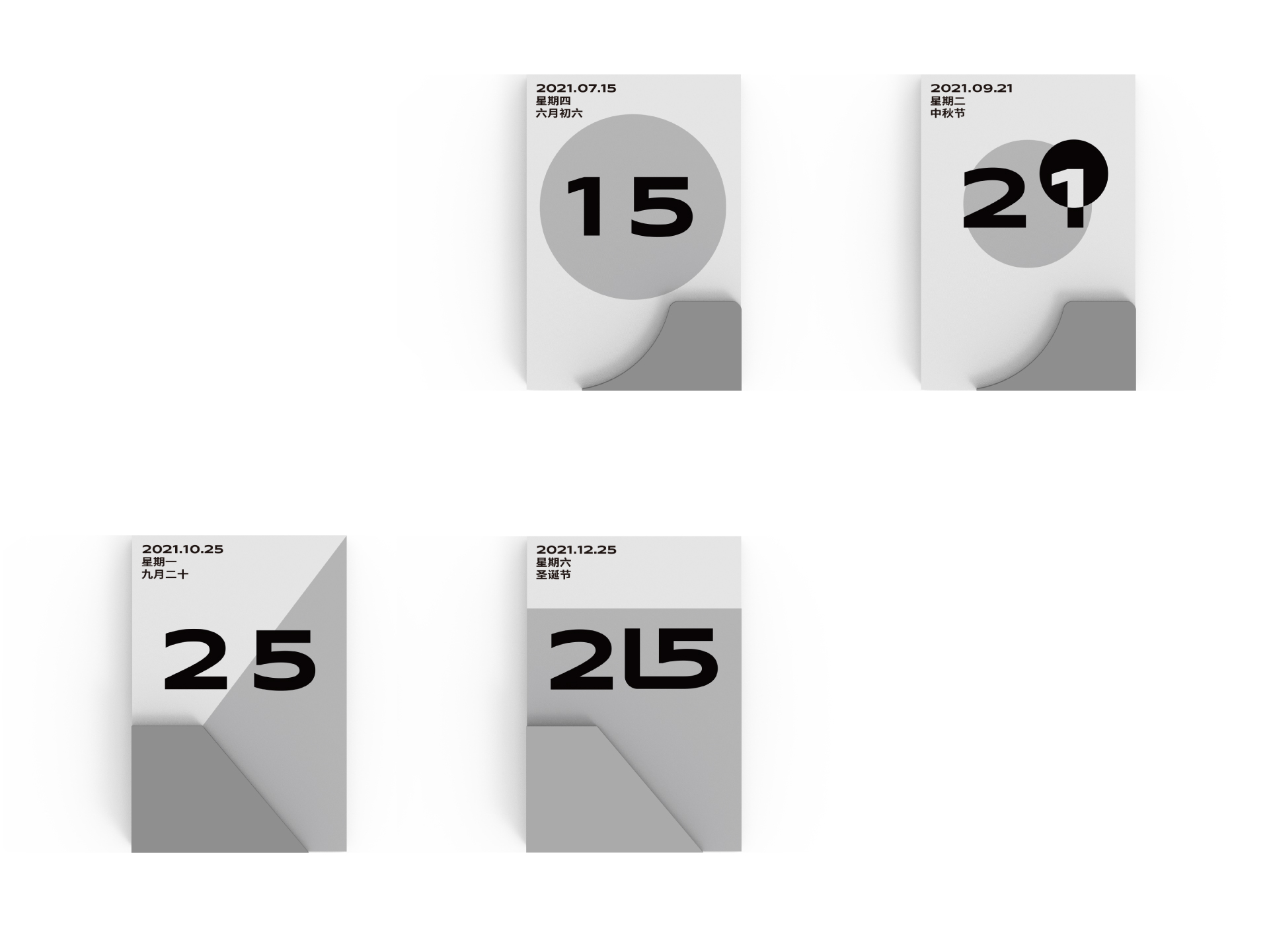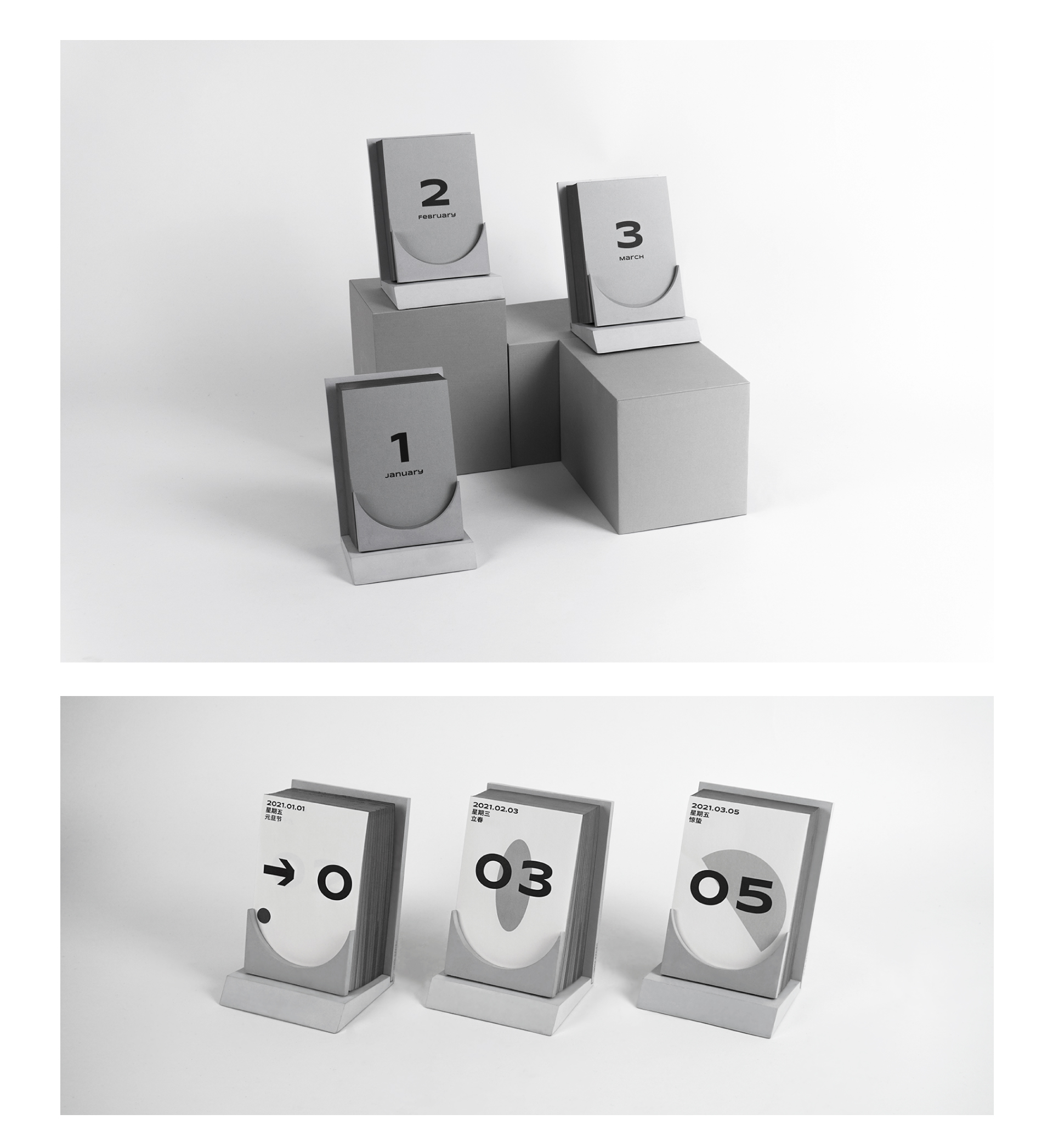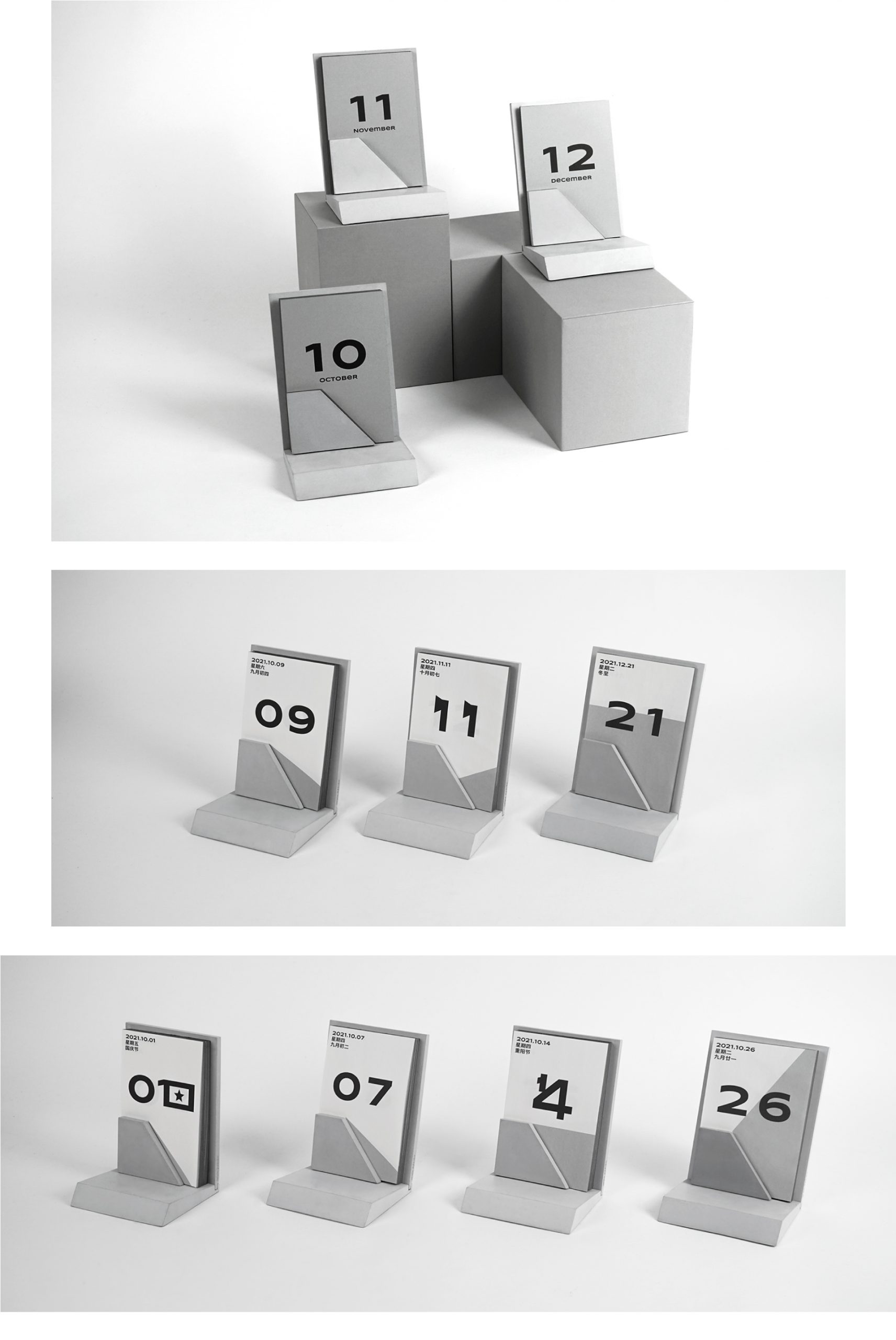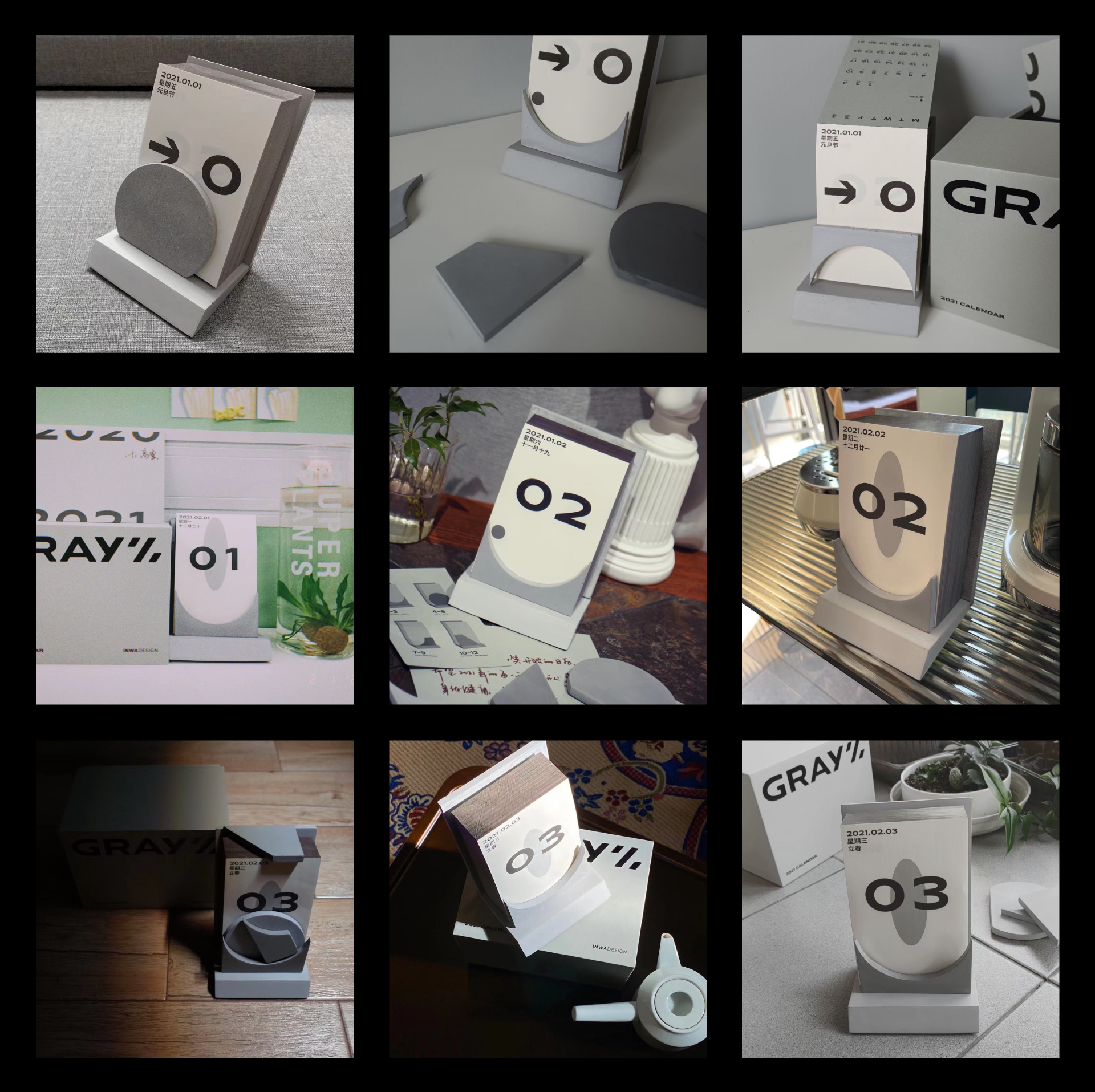受到意大利设计师Enzo Mari在1956年创造的第一个儿童游戏“16个动物拼图”设计的启发,我们设计了一个由4个图形构成的简单的几何拼图,拼图由水泥浇灌而成。水泥拼图造型和纸质日历上的图形,共同构成了每一天的日历画面。用户可以根据自己的爱好,来选择一个或多个水泥图形,与纸质日历上的图形匹配。这也让日历可以呈现出非常多变的面貌,有互动和参与的乐趣。
印刷在纸张上的抽象图形,以每月为一组,分别为不同的主题,进行平面上的表达。日历中很多中国传统节日,也都相应的加入了节庆的符号,例如春节的鞭炮、元宵节的汤圆等等。图形和水泥拼图都非常简洁,使用者也可以充分发挥自己的想象去解读其中的画面意向。日历的底座和水泥拼图部分可以持续使用,而印刷的纸质部分我们会每年持续更新,以达到设计的可持续性,同时还能不断创造新鲜感。
Inspired by the design of the children's game puzzle "16 animali" created by Italian designer Enzo Mari in 1956, we designed a simple geometric puzzle consisting of 4 figures and made of cement.
The shape of the cement puzzle and the graphics on the paper calendar formed the daily calendar picture together. Users can choose one or more cement graphics to match the graphics on the paper calendar according to their preferences. It gives the calendar a very variable appearance, which is fun to interact and participate in.Abstract graphics are printed on paper with a different theme each month. Many traditional Chinese festivals in the calendar have corresponding festive symbols, such as firecrackers in the Spring Festival, glutinous rice balls in the Lantern Festival and so on.The bases and puzzles of the calendars are designed to last, while the printed paper calendars are continuously updated each year for sustainable design.
